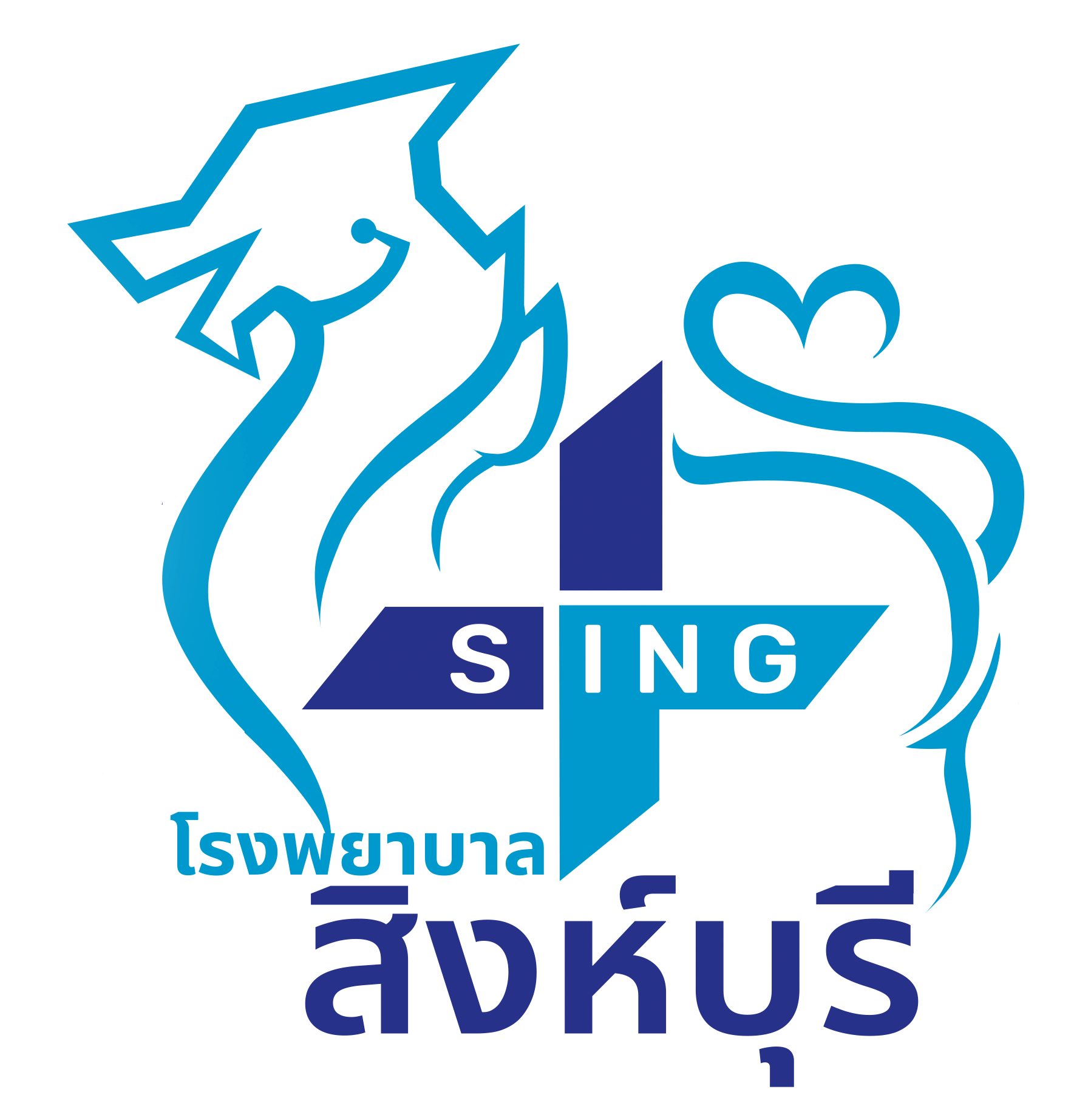ความสามารถในการเห็นไส้ติ่งปกติด้วยเครื่องเอกซเรย์คอมพิวเตอร์ชนิด 16 สไลซ์
คำสำคัญ:
ไส้ติ่ง, เอกซเรย์คอมพิวเตอร์, ผู้ใหญ่บทคัดย่อ
วัตถุประสงค์: เพื่อศึกษาความสามารถในการเห็นไส้ติ่งปกติ และลักษณะของไส้ติ่งปกติจากการตรวจด้วยเอกซเรย์คอมพิวเตอร์ชนิด 16 สไลซ์ เพื่อเปรียบเทียบความแตกต่างของความสามารถในการเห็นไส้ติ่งปกติ ขนาดของเส้นผ่านศูนย์กลางของไส้ติ่งจำแนกตามเพศและอายุ และประเมินประสิทธิภาพของเอกซเรย์คอมพิวเตอร์ชนิด 16 สไลซ์ในการเห็นไส้ติ่งปกติ
วิธีการศึกษา: เป็นการศึกษาย้อนหลังในผู้ป่วยที่ได้รับการส่งตรวจเอกซเรย์คอมพิวเตอร์ของช่องท้องในช่วงระหว่างวันที่ 1 มิถุนายน 2560 ถึง วันที่ 31 มีนาคม 2561 จำนวน 119 ราย เป็นผู้ที่ไม่มีอาการทางคลินิกที่สงสัยภาวะไส้ติ่งอักเสบเฉียบพลันมาก่อน รังสีแพทย์เป็นผู้อ่านภาพเอกซเรย์คอมพิวเตอร์คนเดียวกัน และไม่ทราบประวัติการผ่าตัดไส้ติ่ง วิเคราะห์ข้อมูลโดยค่าสถิติเชิงพรรณนา ทดสอบความแตกต่างตามแต่ลักษณะข้อมูลด้วย Chi-square test, independent sample t-test, และวิเคราะห์ความไวความจำเพาะ ในการประเมินประสิทธิภาพความสามารถในการเห็นไส้ติ่ง
ผลการศึกษา จากการตรวจด้วยเครื่องเอกซเรย์คอมพิวเตอร์ชนิด 16 สไลซ์ จำนวนทั้งหมด 119 คน ส่วนใหญ่เป็นเพศหญิง จำนวน 75 คน (63.03 %) มีอายุมากกว่า 35 ปี จำนวน 101 คน (84.87 %) มีอายุเฉลี่ย 54.93 ปี สามารถเห็นไส้ติ่งปกติได้จากผู้ป่วยจำนวน 105 คน (88.24 %) ตำแหน่งส่วนปลายของไส้ติ่งปกติที่พบ 3 อันดับแรก ได้แก่ รอบลำไส้ใหญ่ กลางลำตัว และหลังลำไส้ใหญ่ จำนวน 47 คน (44.76 %), 37 คน (35.24 %) และ 21 คน (20.00 %) ตามลำดับ สิ่งที่พบอยู่ในไส้ติ่งส่วนใหญ่เป็นสารทึบรังสี จำนวน 50 คน (47.61 %) โดยความสามารถในการเห็นไส้ติ่งปกติแตกต่างกันในแต่ละกลุ่มอายุ (χ2=9.504) อย่างมีนัยสำคัญทางสถิติ (p ≤ .01) เพศ และอายุมีความแตกต่างกันของขนาดเส้นผ่านศูนย์กลางของไส้ติ่งปกติอย่างมีนัยสำคัญทางสถิติที่ระดับ 0.05 และ 0.02 ตามลำดับ โดยวิเคราะห์ ความไว ความจำเพาะเจาะจง ความแม่นยำ positive predictive value, และ negative predictive value ของเอกซเรยคอมพิวเตอรในการวินิจฉัยจากการแปลผลได้ 100 %, 77.80 %, 96.04 %, 96.19 % และ 100 % ตามลำดับ
สรุป อภิปรายผล: จากการประเมินประสิทธิภาพ เอกซเรย์คอมพิวเตอร์เป็นเครื่องมือที่มีความแม่นยำสูง ในความสามารถมองเห็นไส้ติ่งปกติ จะช่วยในการวินิจฉัยไส้ติ่งอักเสบได้ ส่งผลให้อัตราการวินิจฉัยผิดพลาดและอัตราการผ่าตัดผิดพลาดในผู้ป่วยลดลง รวมทั้งมีบทบาทสำคัญในการช่วยศัลยแพทย์วางแผนการรักษา รวมทั้งวิธีการเปิดแผลผ่าตัด
Downloads
เอกสารอ้างอิง
Primatesta P, Goldacre MJ. Appendicectomy for acute appendicitis and for other conditions: an epidemiological study. Int J Epidemiol. 1994;23:155-160.
Cooperman M. Complications of appendectomy. Sur Cli North Am.1983;63:1233-4.
Birnbaum BA, Wilson SR. Appendicitis at the millennium. Radiology. 2000;215:337-48.
van Breda Vriesman AC, Kole Bj, Puylaert JB. Effect of ultrasonography and optional computed tomography on the outcome of appendectomy. Eur Radiol. 2003;13:2278-82.
Tamburrini S, Brunetti A, Brown M, et al. CT appearance of the normal appendix in adults. Eur Radiol. 2005;15:2096-103.
Ege G, Akman H, Sahin A, et al. Diagnostic value of unenhanced CT in adults patients with suspected acute appendicitis. The British journal of radiology. 2002;75:721-5.
Kessler N, Cyteval C, Gallix B, et al. Appendicitis: Evaluation of sensitivity, specificity, and predictive values of US, Doppler US, and laboratory findings. Radiology. 2004;230:472-8.
Thomas A. Foley, Frank E, Mark AN, et al. Differentiation of Nonperforated from Perforated Appendicitis. Accuracy of CT Diagnosis and Relationship of CT Findings to Length of Hospital Stay. Radiology. 2005;235:89-96.
Wise SW, Labuski MR, Kasales CJ, et al. Comparative assessment of CT and sonographic techniques for appendiceal imaging. AJR. 2001.
Benjaminov O, Atri M, Hamilton R, et al. Frequency of visualization and thickness of normal appendix at nonenhanced helical CT. Radiology. 2002;225:400-106.
Scatarige JC, DiSantis DJ, Allen HA III, et al. CT demonstration of the appendix in asymptomatic adults. Gastrointest Radiol. 1989;14(3):271-3.
Grosskreutz S, Goff WB 2nd , Balsara Z, et al. CT of the normal appendix. J Comput Assist Tomogr. 1991;15:575-7.
Jan YT, Yang F-S, Huang JK. Visualization rate and pattern of normal appendix on multidetector computed tomography by using multiplanar reformation display. J Comput Assist Tomogr. 2005;29(4):446-51.
Rao PM, Rhea JT, Novelline RA. Sensitivity and specificity of the individual CT signs of appendicitis: experience with 200 helical appendiceal CT examinations. J Comput Assist Tomogr. 1997;21:686-92.
Jacob JE, Birnbaum BA, Macari M, et al. Acute appendicitis: comparison of helical CT diagnosis focused technique with oral contrast material versus nonfocused technique with oral and intravenous contrast material. Radiology. 2001;220:683-290.
Malone AJ Jr, Wolf CR, Malmed AS, et al. Diagnosis of acute appendicitis: value of unenhanced CT. Am J Roentgenol. 1993;160(4);763-6.
Inneke W, Els P, Michel DM, John dM. The Normal appendix on CT: Does Size Matter? PLOS ONE. 2014;9(5):1-7.
Wakeley CP. The position of the vermiform appendix as ascertained by an analysis of 10,000 cases. J Anat. 1993;67:277-3.
Lane MJ, Liu DM, Huynh MD, et al. Suspected acute appendicitis: nonenhanced helical CT in 300 consecutive patients. Radiology .1999;213:341-6.
Rao PM, Rhea JT, Novelline RA, et al. Helical CT technique for the diagnosis of appendicitis: prospective evaluation of a focused appendix CT examination. Radiology. 1197;202:139-44.
Stefania T, Arturo B, Michele B, Claude BS, Giovanna C. CT appearance of the normal appendix in adults. Eur Radiol. 2005;15:2096-13.
ดาวน์โหลด
เผยแพร่แล้ว
รูปแบบการอ้างอิง
ฉบับ
ประเภทบทความ
สัญญาอนุญาต
ลิขสิทธิ์ (c) 2022 โรงพยาบาลสิงห์บุรี

อนุญาตภายใต้เงื่อนไข Creative Commons Attribution-NonCommercial-NoDerivatives 4.0 International License.
บทความที่ได้รับการตีพิมพ์เป็นลิขสิทธิ์ของโรงพยาบาลสิงห์บุรี
ข้อความที่ปรากฏในบทความแต่ละเรื่องในวารสารวิชาการเล่มนี้เป็นความคิดเห็นส่วนตัวของผู้เขียนแต่ละท่านไม่เกี่ยวข้องกับโรงพยาบาลสิงห์บุรี และบุคคลากรท่านอื่นๆในโรงพยาบาลฯ แต่อย่างใด ความรับผิดชอบองค์ประกอบทั้งหมดของบทความแต่ละเรื่องเป็นของผู้เขียนแต่ละท่าน หากมีความผิดพลาดใดๆ ผู้เขียนแต่ละท่านจะรับผิดชอบบทความของตนเองแต่ผู้เดียว







